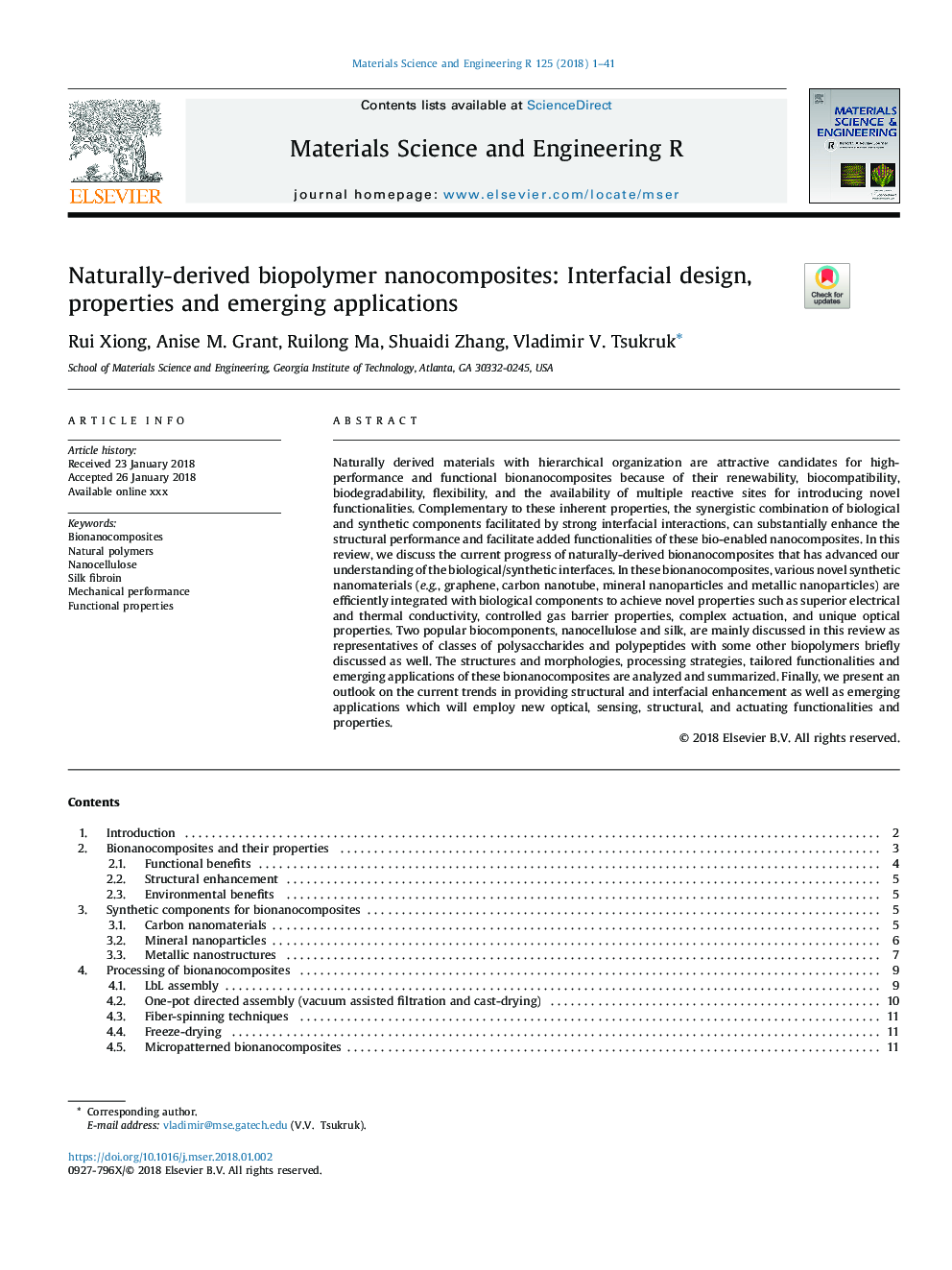| Article ID | Journal | Published Year | Pages | File Type |
|---|---|---|---|---|
| 7924394 | Materials Science and Engineering: R: Reports | 2018 | 41 Pages |
Abstract
Naturally derived materials with hierarchical organization are attractive candidates for high-performance and functional bionanocomposites because of their renewability, biocompatibility, biodegradability, flexibility, and the availability of multiple reactive sites for introducing novel functionalities. Complementary to these inherent properties, the synergistic combination of biological and synthetic components facilitated by strong interfacial interactions, can substantially enhance the structural performance and facilitate added functionalities of these bio-enabled nanocomposites. In this review, we discuss the current progress of naturally-derived bionanocomposites that has advanced our understanding of the biological/synthetic interfaces. In these bionanocomposites, various novel synthetic nanomaterials (e.g., graphene, carbon nanotube, mineral nanoparticles and metallic nanoparticles) are efficiently integrated with biological components to achieve novel properties such as superior electrical and thermal conductivity, controlled gas barrier properties, complex actuation, and unique optical properties. Two popular biocomponents, nanocellulose and silk, are mainly discussed in this review as representatives of classes of polysaccharides and polypeptides with some other biopolymers briefly discussed as well. The structures and morphologies, processing strategies, tailored functionalities and emerging applications of these bionanocomposites are analyzed and summarized. Finally, we present an outlook on the current trends in providing structural and interfacial enhancement as well as emerging applications which will employ new optical, sensing, structural, and actuating functionalities and properties.
Keywords
Related Topics
Physical Sciences and Engineering
Materials Science
Electronic, Optical and Magnetic Materials
Authors
Rui Xiong, Anise M. Grant, Ruilong Ma, Shuaidi Zhang, Vladimir V. Tsukruk,
